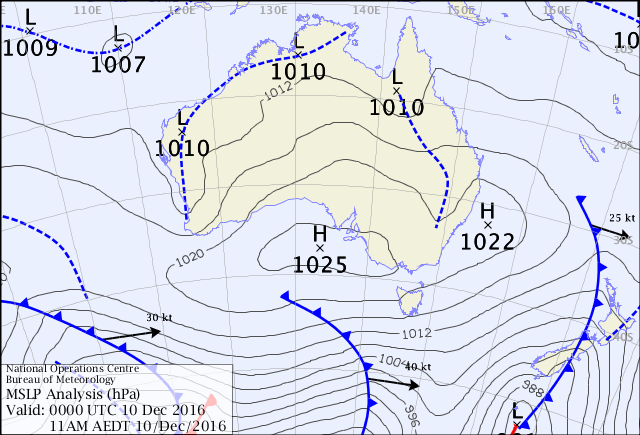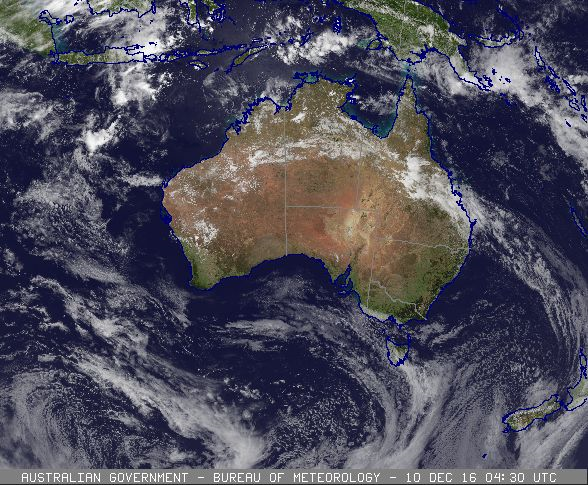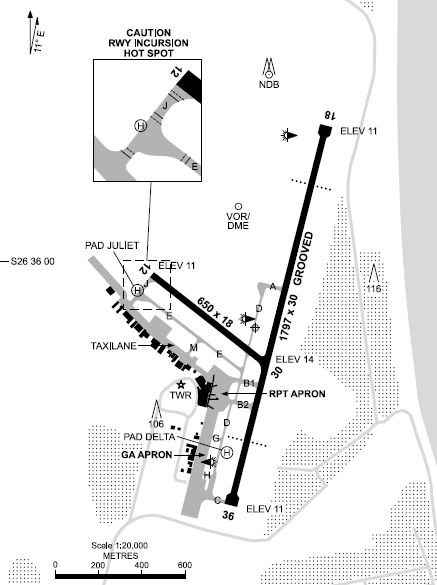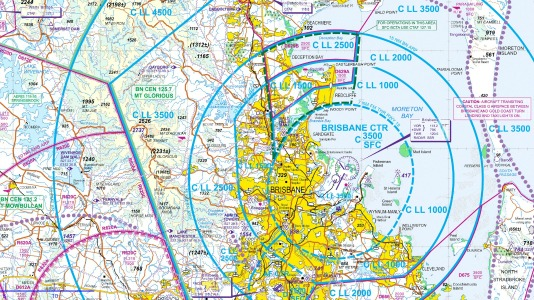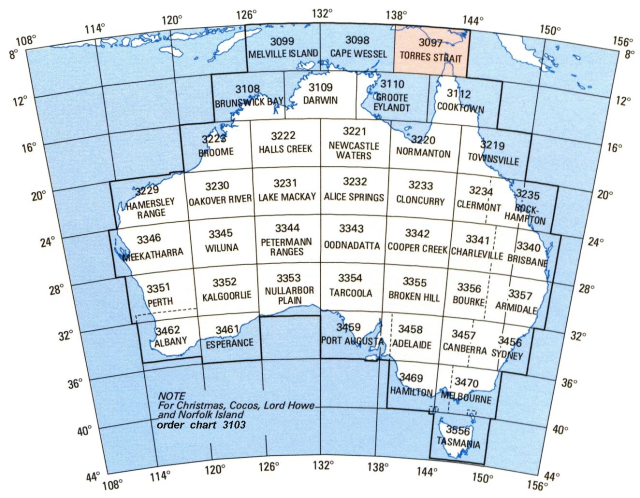| Date: 10/12/2016 Purpose of Flight: Circuits VI and Controlled airspace Aircraft: VH-TOI Flight time (hrs): 1.4 Airport: Sunshine Coast Airport (YBSU) TAF YBSU 102211Z 1100/1112 METAR YBSU 110330Z AUTO 11010KT 9999 // NCD 24/13 Q1020 http://www.bom.gov.au/climate/dwo/IDCJDW4081.latest.shtml Super excited about learning to how to fly in controlled airspace. I’d spent about a month out of the cockpit and planned to drive up to the Sunshine Coast for the afternoon to have a lesson. The flight school (ADFA) is quite busy during the week teaching between 20-30 full time students, so I decided to opt for a time when the school (and air traffic) was less busy. Today I was back in the Tobago (VH-TOI) since KEP was being flown around the Whitsundays. Like I said before, the Tobago has quite a bit more power, more spacious and comfortable to fly. Listen out on the ATIS and jot down relevant Wx, Traffic in the area details and the ATIS signature … e.g. ‘delta’… Change radio freuency to 121.4 MHz to communicate with tower ground. Sunshine coast ground and air traffic control operate on two separate frequencies. When establishing communication with the tower on the ground say the following: Leaving controlled airspace: Transitioning to uncontrolled airspace: Entering Controlled airspace “Sunshine Coast Tower Tobago Oscar India maintaining 1500 at Noosa Heads Inbound, received information echo” The above radio routines were used during the flight, taking off runway 18. Strong crosswind experienced on take off. Nose wheel had significant jitter at speeds <40 kts. Turned left on crosswind and maintained 1000 ft on downwind above water tracking north. Stayed close to the shoreline past column and noosa heads and exited airspace. Generally poorer than usual visibility ~4-5 mi, and clouds at ~2000 ft made for interesting VFR conditions – the disorientation was quite noticeable. Turned towards Mt Cooroy and climbed to 1500 ft prior to heading towards Tewantin. Radio call to tower made upon reaching Noosa Heads. Instructor made a request to join a circuit pattern for touch-and-go practice. Descended to 1000 ft and joined on base. Tower controlled circuits were fairly straight forward, one only had to confirmed intention (e.g. t&g vs full stop) to tower on downwind and await further instructions (e.g. being directed into a left or right circuit). As always, repeating the final instructions to ensure instructions were understood. Touch and go circuits were being performed on Rwy 12. The runway was significantly shorter than I’ve been used to (650 m versus 2000 m at YHBA!!. The downwind leg was over in under a minute so I felt like I had to slow down a bit to keep ahead of the aircraft. Landings felt like they were improving despite being in a different aircraft than what I was used to. Something that took some getting used to was needing to set the flaps with a switch. This is because it took longer to retract or expand the flaps as necessary. I felt more pressured for time when hitting the airstrip and transitioning to take-off because it took a few seconds to get the flaps back to take-off position. I practiced about 4-5 landings, each time improving the routine for a shorter airstrip. On the final circuit the instructor cleared me for a glide landing. Engine power was cut and a well executed turn to the runway was made – reaching ~75kts glide with feathered pitch (the effect was really noticeable). Flaps engaged, re-aligned to land at the numbers. To assist in reducing the speed on mid final, the pitch was set to fine (i.e. more vertical) to increase air resistance… again the effect was noticeable. Upon landing call was made to request taxi clearance back to ADFA on ground frequency (121.10 MHz)
The following is a brief overview of the maps and nav-aids used for IFR and VFR… The US publishes VFR charts known as Sectionals. These cover the entire country, including non-continental areas like Hawaii. IMHO these are excellent although in busy airspace, the 1:500,000 scale can become complex. So pilots learning to fly in the US usually become familiar with the sectional covering their base field, and then with that understanding, can look at sectionals for anywhere else in the US. Printed sectionals can also be used for long range VFR flight planning as they can be laid out in sequence and routes plotted across adjoining chart boundaries. For online chart examination, SkyVector publishes all US sectionals online, which is a great resource. Australia does not publish sectionals covering the whole country. It’s a good question as to why but essentially the centre of the country is a big desert where few people live. So from a historical perspective, the inner part of the country has been regarded as “remote” and thus less in need of highly detailed maps. In addition, the word ‘sectional’ isn’t even in Australian pilot lexicon, so use the word ‘chart’ instead. Australia publishes Visual Terminal Charts (VTC) for each large metropolitan area which are a Mercator projection at 1:250,000. And there are Visual Navigational Charts (VNC) which mostly encapsulate the VTCs and are at 1:500,000 (same as sectionals). The image below is an example of the Brisbane VTC.
As VTC/VNCs cover only largely populated areas, for printed chart long VFR route planning, you will need to revert to the World Aeronautical Charts (WACs), pronounced ‘whacks’.
WACs started as an ICAO project after WW2 to transition from the existing US-based international wartime series and so all Allied nations were effectively asked to harmonize their maps with a US design. But in 2015, the FAA stopped WAC production and thus a recently US-trained VFR PPL would never have heard of them(!) The US WAC coverage looked like this: WACs are a Lambert projection at 1:1,000,000 and in Australia, printed chart VFR route planning would be done over sequential WAC’s, with likely a supplemental VNC chart for the populated areas to be crossed. WAC’s do not contain airspace (although supposedly an aeronautical chart!). They are essentially a topo map with features that are easy to spot from the air. There are no free online sources for Australian government produced charts. SkyVector shows a very data sparse US Sectional-like view of Australia but I wouldn’t use it for anything other than simple distance/leg planning. Cost and availability for printed maps – there are several places that sell and distribute these maps. You may wish to check out the following links to browse what’s catalogued… unfortunately nobody ever shows a preview! http://www.airservicesaustralia.com/publications/document-and-chart-descriptions/ http://www.flightstore.com.au/visual-navigation-charts-vnc http://www.flightstore.com.au/visual-terminal-charts-vtc http://www.flightstore.com.au/terminal-area-charts-tac Most maps cost ~$11 each for any area listed… All of the previously mentioned chart types for Australia are now encapsulated and adjoined in a single app known as OzRunways. OzRunways works on both iOS and Android and seems very widely used amongst Australian VFR pilots. For VFR use, they provide a so-called ‘Hybrid VFR Map’ which simply uses the most detailed chart available. Price at time of writing is about AUD $100 and chart-wise also has New Zealand and Papua New Guinea (Nb It should be noted that the $100 p.a. subscription fee does not including worthy add-ons).
|
Lesson 10. Circuits et. Emergency Landings
Date: 29/10/2016
Flight Time: 1.0
Aircraft: VH-KEP
Airport: Hervey Bay Aerodrome
Instructor: MM , Briefing time (hr): 0
Time to take off: 08:30 Runway: 11
Time to land: 9:30 Runway: 11 Total Engine time: 1.0 Approx. Fuel 36 L
Wx at aerodrome: Temp 26 Cloud Clear below 1200 ft, Wind Direction 060 deg, Wind Strength 8 kts , Dewpoint 14, Rainfall nil, Wind types __, Visibility 10 km, Humidity 46%, QNH 1019, Changes in Wx Conditions, BOM daily wx obs: Temps Min (°C) 14.9, Max (°C) __, Rain (mm) 0, Evap __, Sun __, [[Max daily wind gust: Dir __, Spd (km/h) __, Time (local) __]] [[9:00am record: Temp (°C) 25.5, RH (%) 52, Cloud __, Dir ENE, Spd (km/h) 13, MSLP (hPA) 1019.0]], [[3:00pm record: Temp (°C) __, RH (%) __, Cloud __ , Dir __, Spd (km/h) __, MSLP (hPa) __]]
http://www.bom.gov.au/climate/dwo/IDCJDW4056.latest.shtml
TAF YHBA 282132Z 2900/2912
04012KT 9999 FEW040
FM290900 07007KT 9999 SCT030
RMK
T 26 27 25 22 Q 1018 1017 1016 1018
METAR YHBA 290230Z AUTO 04007KT 360V090 9999 // NCD 26/14 Q1017
RMK RF00.0/000.0
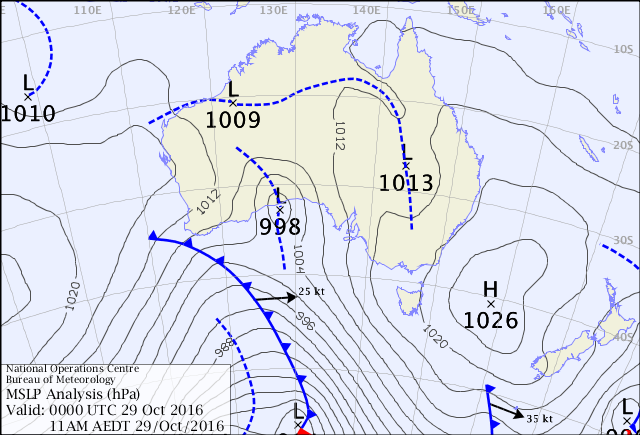
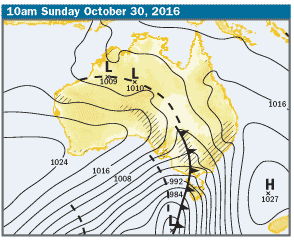
Goals: Review previous lesson and optimise operation of aircraft… Downwind checks, operating minimums (1/2 balance ball, +10/10 heading, Vref +5 kts -0 kts, +150 ft of set altitudes, main wheels first), maintain consistent tracking, pre-landing checklist, emergency engine cut off routine practice ++ Exams: Apply revision of all aviation theory to date + Radio license and operation checks.
Briefing discussion: Home-study on circuits, own notes – exam preparation. No formal briefing necessary as one was due to practice the circuit pattern and improve on skills.
Tasks: pre-flight checks, oil and fuel check, wheel chocks, start-up procedures and checks, radios, take-off, climbing, descent, turns, preflight briefing (re-aborted take-off procedure), touch’n’go x1, x2 missed approach & go-arounds + 1 demonstrated emergency engine cut out + 3 practice engine cut-off landings final landing.
Notes: 110 L of fuel on take-off. Runway 11 makes for an interesting take-off given the dip in the runway at mid-point. This was overall a challenging lesson learning and applying new skills to the basic circuit pattern. Initial circuit was terrible however and had a very steep approach on landing, but recovered nicely.
The missed approaches were executed at 200 ft of the ground on approach. Basic procedure involved; full power, attitude adjustment, full mixture, fuel pump on and progressive raising of flaps (careful attention to airspeed, climb rate and attitude) while climbing out. Make radio-call to signify go-around as required. This was fluid by the second attempt.
By far the most interesting part of the lesson was when I was shown how to land with an engine-out on mid-downwind. Key points learned; make an immediate turn towards the runway with holding nose attitude setting the glide speed. Aim initially at a point 2/3rds down the runway closest to where you are approaching. Maintain glide-speed and put flaps down only when you feel you could make the field.
On initial practice it was evident I did not make enough of an effort to get to glide-speed early on… instructor aborted by applying thrust as we were entering the aerodrome with a shallow and oblique approach.
Second attempt made with a right-handed circuit (to avoid local skydiver group). Made an easy glide back to base and entered a third circuit to the left shortly after. Due to the novelty of working on the right-circuit, instructor took over making clear radio calls.
Final engine-failure practice was for a full-stop that was actually quite smooth and overall quite well done.
Radio chatter was quite interesting with the RFDS landing within the hour, several direct approaches from 8-9 nm, a sky-diving troupe (coordinated carefully in terms of timing) and a congested pattern to manage on the second missed approach practice. I kept ahead of the traffic calls and answered questions directly in communication with other aircraft. Again I was able to record this but my SDR radio doesn’t capture other radios that well for some reason (probably because of the poor tuning characteristics)…
https://clyp.it/zozetssj/widget
The Exam for Radio calls and Pre-flight solo were more challenging than I anticipated… but I still did great (93% for both tests) some of what featured on the test (from memory)
Readability codes (RST):
- Unreadable
- Barely readable, occasional words distinguishable
- Readable with considerable difficulty
- Readable with practically no difficulty
- Perfectly readable
Mayday call code… (NAANIPPA)
- MAYDAY, MAYDAY, MAYDAY (yes, three times)
- Name of station addressed
- Aircraft call sign
- Aircraft type
- Nature of emergency
- Intentions of pilot
- Position (or last known position): flight level/Altitude/Height; heading
- Pilot Qualifications (No instrument qualifications: IMCrating etc.)
- Any other useful information e.g. persons on board etc.NB: The same things can be mentioned for PAN PAN PAN calls… Remember the ultimate difference between a Mayday and a Pan is that one is a distress call the other is an urgent situation.
Distress: The aircraft is threatened by serious and/or imminent danger and requires immediate assistance
Urgency: A condition concerning the safety of an aircraft or other vehicle, or of some person on board or in sight, but not requiring immediate attention
Engine fire protocol:
– set glide attitude, pick field and flaps as necessary
– try to cease fire by leaning mixture, fuel pump off, throttle off, carb heat on
– radio calls
– use fire hydrant as necessary
– land safely/brace for impact
Minimum time from last alcoholic drink to flight is 8 hrs.
Apparently smoking is allowed while flying – as crazy as that sounds there is no total ban on smoking… it’s just not allowed when the pilot is attempting to land/take off, or while refuelling.
Transponder ‘squark code’ settings:
– 1200 for VFR, 1202 for gliders, 3000 for controlled airspace, 7500 for hijack ’7, 5 taken alive’, 7600 communications failure ’7, 6 radio fix’, 7700 Emergency ‘7,7 going to heaven’
NDB beacons are transmitted on low frequency and middle frequency ranges…
Ground waves vs Air waves – state the differences;
Propagation distances <5,000 ft ~60 nm, ~10,000 ft ~90 nm
ERSA contains information about airfield specific radio failure procedures
Specific aircraft knowledge; speeds; VFE (101), FNE (152), VNO (112), Va (124), Vx (64), Vy (76), Vs (w (51)/wo flaps (59)), normal climb (80), glide (70) short field (65), approach w/flaps (65-70), w/oflaps (75-80).
Fuel capacity (188 L) type of fuel (100LL), type of oil ? (6-8 quarts), total output (180 BHP at 2300 RPM), total weight w/fuel and oil 686, max capacity 1111 kg, 4 cylander carburettor engine.
Radios: YHBA AWIS 134.9 MHz, general CTAF 126.55 MHz
Lesson 9 Circuits IV.
Date: 22/10/2016
Purpose: Circuits IV
Aircraft: VH-KEP
Flight Time: 0.9
Airport: Hervey Bay Aerodrome
Instructor: EB , Briefing time (hr): 0
Time to take off: 12:00 Runway: 29
Time to land: 12:55 Runway: 29 Total Engine time: 0.9 Approx. Fuel ____
Wx: Wx at aerodrome: Temp 26 Cloud clear below 1200 ft, Wind Direction 350, Wind Strength 10 kts, Dewpoint 15, Rainfall 0, Wind types __, Visibility >10 km, Humidity 50%, QNH 1016 Hpa, Changes in Wx Conditions, BOM daily wx obs: Temps Min (°C) 13.7, Max (°C) __, Rain (mm) 0, Evap __, Sun __, [[Max daily wind gust: Dir __, Spd (km/h) __, Time (local) __]] [[9:00am record: Temp (°C) 24.9, RH (%) 53, Cloud 1, Dir N, Spd (km/h) 17, MSLP (hPA) 1017.2]], [[3:00pm record: Temp (°C) 25.3, RH (%) 58, Cloud __ , Dir N, Spd (km/h) 22, MSLP (hPa) 1012.7]]
http://www.bom.gov.au/climate/dwo/IDCJDW4056.latest.shtml
TAF YHBA 212128Z 2200/2212
36014KT 9999 FEW035
FM220900 33006KT 9999 SCT040
RMK
T 26 27 25 23 Q 1016 1015 1013 1014
METAR YHBA 212200Z AUTO 01009KT 9999 // SCT031 24/14 Q1018
RMK RF00.0/000.0
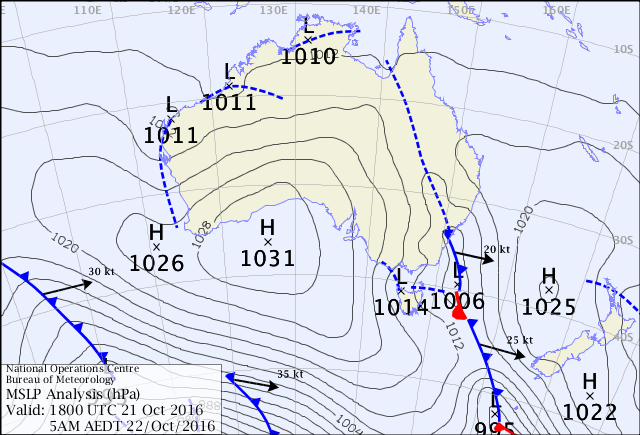
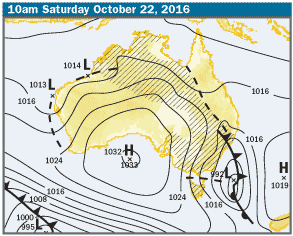
Goals: Review previous lesson and optimise operation of aircraft… Downwind checks, operating minimums (1/2 balance ball, +10/10 heading, Vref +5 kts -0 kts, +150 ft of set altitudes, main wheels first), maintain consistent tracking, pre-landing checklist, emergency engine cut off routine practice
Briefing discussion: Home-study on circuits and own notes, no formal briefing necessary as one was due to practice the circuit pattern and improve on skills.
Tasks: pre-flight checks, oil and fuel check, wheel chocks, start-up procedures and checks, radios, take-off, climbing, descent, turns, preflight briefing (re-aborted take-off procedure), touch’n’go x5 + final landing.
Notes:
90 L of fuel on take-off. Skills generally improving with the whole work routine and approach becoming second nature. Ballooning minimised with attention to airspeed – gusting is problematic for staying on centreline. Another emergency engine cut-off practiced at 500 ft, noticeably little choice to go for off runway 29 – instructor remarked “might as well just try and return to field”.
Protocol for emergency landing – dip nose for glide speed, select field, flap as necessary, + carb heat on + fuel pump on + mixture rich.
After third circuit, shown how to do a flapless approach and then practiced 2-3x. It was explained that the descent is supposed to be shallow and the nose is pitched higher than usual – clean stalling airspeed +8-9 kts above typical stalling speed with full 40 deg flaps (51 kts in KEP). Noticeably more buffeting from thermals at lower altitudes.
For something different I decided to record my radio calls to see how I may be being interpreted… I used an old software defined radio usb stick (NooElec R820T2 SDR & DVB-T NESDR Mini 2) and HDSDR to tune into the CTAF frequency (126.55 MHz) and record the transmissions. Overall I was surprised how well it worked considering I left the computer as-is at ground base in a building that was basically a faraday cage for radio signals. In anycase, I have provided a recording of calls from VH-KEP below.
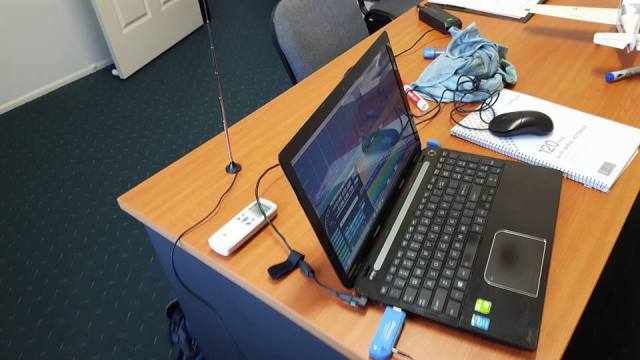
https://clyp.it/lktt5nei/widget
Next week exam topics: Radio calls and Pre-flight solo questions… some of the potential topics include;
– Radio readability levels
– PanPan calls vs Mayday calls
– Water and fuel density
– Mixture concentration
– Icing phemnomenon (induced, impact, fuel, throttle)
– VMC… Visual meterological conditions
– Limitations on flying – 500 ft over terrain, 1000 ft over built up areas…
– Transponder ‘squark code’ settings: 1200 for VFR, 1202 for gliders, 3000 for controlled airspace, 7500 for hijack ’7, 5 taken alive’, 7600 communications failure ’7, 6 radio fix’, 7700 Emergency ‘7,7 going to heaven’.
Radios: YHBA AWIS 134.9 MHz, general CTAF 126.55 MHz
The 5-T’s
Turn Time Twist Throttle Talk is dogmatically taught at flight schools as an ideal work sequence for instrument flights.
Turn – turn to the desired heading. You may need to turn to an intercept heading to get on the desired radial or bearing.
Time – start your timer, if needed.
Twist – twist the OBS to the proper setting, either required radial or the reciprocal to eliminate reverse sensing.
Throttle – reduce your airspeed
Talk – if asked to report, do so.
Although the above sequence appears to be effective for improving navigation skills and disciplining oneself, it seems at odds with the Aviate (Throttle + Turn), Navigate (Time + Twist), and Communicate (Talk) adage… So Throttle, Turn, Time, Twist and Talk would seem like a more appropriate sequence.
Cognitions of a stranger.
I’ve jotted down some of the things that have been playing on my mind these past few weeks;
– I feel estranged from my family; my parents live on the Gold Coast (450 km), my brother lives in Melbourne (~1850 km). I call them about 2 times a week but only visit once a month.
– I have no physical friends anymore… I only ever see my old friends on facebook through a passive feed of their happy life moments.
– I broke up again, the relationship wasn’t rewarding, I feel like a horrible person for all of it.
– There are things in life that I cannot fix: For the past year now my father has been dealing with psychotic depression, with multiple suicide attempts and is currently in hospital. My mother’s stressed out and I have daily calls worrying about what’s going on and how to plan for an uncertain future.
– I have to deal with the consequences of my own recent failings; I failed a rotation and am looking at a later start to internship than I previously expected.
– Constant presence of negative attitudes: For the past 5 weeks I’ve been listening to other med students delight in reminding me that they’ll be back in Brisbane next year (away from here, with their family and friends). They also ‘feel sorry’ for the next group of unlucky students that I will meet.
– I have no plans for the holidays… 2 months without any fixed goals and that absolutely scares me.
– The immediate future looks frankly bleak; I face another year of being sullen and alone and will be forced to make new friends with strangers.
– I feel unfulfilled; despite living independently I end up more sad about being lonely…. in fact it’s the loneliest I’ve ever felt and I cannot re frame that.
– I only have myself to blame for how things have ended up.
Lesson 8. Circuits III
Date: 15/10/2016
Purpose of Flight: Circuit training
Aircraft: VH-KEP
Flight time: 1.0
Airport: Hervey Bay Aerodrome
Instructor: MM , Briefing time (hr): 0
Time to take off: 8:15 Runway: 11
Time to land: 9:15 Runway: 11 Total Engine time: 1.0 Approx. Fuel ____
Wx: Wx at aerodrome (Approx time of AWIS call 8:00): Cloud scattered 5500, Wind Direction 120 N, Wind Strength 9 kts , Temp 21oC, Dewpoint 11, Rainfall last 10 mins nil, Wind types -, Visibility >10km, Humidity 55%, QNH 1021,
Changes in Wx Conditions, BOM daily wx obs: Temps Min (°C) 16.3, Max (°C) __, Rain (mm) 2, Evap __, Sun __, [[Max daily wind gust: Dir __, Spd (km/h) __, Time (local) __]] [[9:00am record: Temp (°C) 18.3, RH (%) 88, Cloud 7, Dir S, Spd (km/h) 13, MSLP (hPA) 1019.9]], [[3:00pm record: Temp (°C) __, RH (%) __, Cloud __ , Dir __, Spd (km/h) __, MSLP (hPa) __]] http://www.bom.gov.au/climate/dwo/IDCJDW4056.latest.shtml
Wind 120 N 9 kts, QNH 1021 HpA, Temp 21, Cloud scattered at 5500, visibility >10k dewpoint 11, humidity 55%, rainfall nil
TAF YHBA 141621Z 1418/1506
15012KT 9999 SCT040
FM142300 12018KT 9999 SCT045
RMK
T 17 19 23 23 Q 1020 1021 1021 1020
METAR YHBA 142100Z AUTO 13009KT 9999 // SCT047 BKN055 21/11 Q1021
RMK RF00.0/000.4
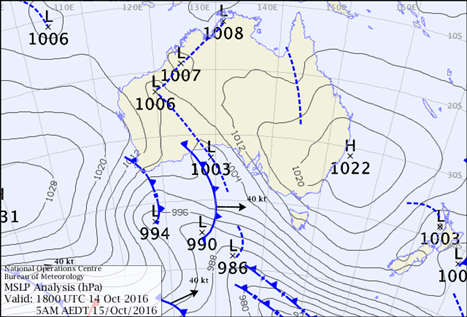
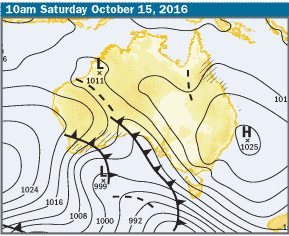
Goals: Review previous lesson and optimise operation of aircraft… Downwind checks, operating minimums (1/2 balance ball, +10/10 heading, Vref +5 kts -0 kts, +150 ft of set altitudes, main wheels first), maintain consistent tracking, pre-landing checklist, emergency engine cut off routine practice
Briefing discussion: Home-study on circuits and own notes, no formal briefing necessary as one was due to practice the circuit pattern and improve on skills.
Tasks: pre-flight checks, oil and fuel check, wheel chocks, start-up procedures and checks, radios, take-off, climbing, descent, turns, preflight briefing (re-aborted take-off procedure), touch’n’go x5 + final landing.
Notes: No damage to aircraft, 105-110 L of fuel onboard with 55-60 L in right wing, 5-6 circuits today, radio calls have improved. Strong headwind off the runway above 100ft (trees protecting the airstrip), noticeably forceful 15 kts pushing off course. Made adjustments by turning 5-10 degrees into the wind on crosswind. Initial landing was flat but otherwise the approach went well. Improvements were made on base and final for dealing with the wind and turbulence. Now 3 hrs into circuits having found a rhythm of doing things it becomes much more natural to keep ahead of the plane, make appropriate radio calls and especially listen out for other aircraft. Perceptual awareness is improving also. One noticed that the airfield has 3 windsocks at different parts of the runway. Wind fluctuated at etiher end of the runway and it was possible to start anticipating a sudden change in wind direction by keeping an eye on the windsock.
Spacing of other aircraft was managed.
One emergency engine-out practiced at 500 ft on 4th circuit – nose down, anticipated field, flap as required and power on to recover.
Instructor believes my skills are on track to anticipate a solo within 3-4 more circuit training flights. Typically it takes 6-7 circuit training flights before the instructor believes it is appropriate to let the student go solo… if anything major comes up, or pilot requires more time practicing a particular aspect that time is extended. As this completes my 3rd hr of circuits I can expect that we’ll start to practice more emergency situations and failures e.g. flapless approach and landing, engine out landing etc.
Look forward to next week!
Radios: YHBA AWIS 134.9, general
Personality Disorder Notes
Prevalance 10-20% of population… 50% of all patients with axis I also have axis II, personality disorders are all ego syntonic…
Paranoid personality;
- Pervasive, distrust, suspicious of others
- Suspects exploitation or deceit
- Questions loyalty and fidelity
- Reluctant to confide
- Reads hidden demeaning messages
- Unforgiving – grudge holder
- Perceives attacks on character/reputation
- Has to be without Schizophreia or other psychosis
- Prevalance 0.5-2.5% of gen population
- Increased risk in families who have schizophrenia
- M>F
- No direct family inheritence
- Higher incidence in minorities, immigrants and deaf population
- Affectively restricted, pride in being rational
- Lack warmth and are impressed by power and rank
- Psychotherapy is treatment of choice, requiring honest and straigtforward approaches, may need to use small doses of antipsychotics…
Schizoid personality
- Schizoids avoid
- A pervasive pattern of detachment from social relatonships
- A restricted range of emotional expression
- Doesn’t desire or enjoy closeness with others
- Chooses solitary activities, limited interests
- Little interest in sex or friendships
- Indifferent to opinions of others
- Seems cold, detached, affect flattned
- Rule out psychotic illness before diagnosing
- May affect 7.5% of the general population
- 2:1 M:F ratio
- Choose solitary jobs with little to no contact with others
- Not psycotic, and have good reality testing
- Onset usually in early childhood
- Psychotherapy treatment – single or group
- Small doses of antipsychotics, antidepressants, stimulants
Schizotypal personality.
- Atypical behaviour
- Pervasive pattern of social and interpersonal deficits
- Cognitive, perceptual distortions and eccentric behaviour
- Ideas of reference, magical thinking, bodily illusions
- Suspicious, odd, affect constricted
- Lack of close friends, social anxiety that does not ease with familiarity, paranoid fears
- Not explained by psychotic disorder
- 3% of population… sex ratio unknown…
- Increased in relatives of those with schizoprenia
- ??? % commit ??? to tx ??? antipsychotics…
Antisocial personality
- Pervasive pattern for and violation o basic rights of others since age 15
- Failure to conform to social norms, unlawful behaviour
- Deceitful, comfortable lying, conning others
- Impulsive, does not plan ahead
- Irritable, agressive, reckless disregard for safety
- Irresponsible behaviour towards work or finances
- Lack of remorse for actions
- The person must be at least 18 years old for diagnosis
- There must be evidence of conduct disorder onset prior to 15 years old
- This behavour is not better explained by mania or schizophrenia
- Many have a neurological or mental disorder that has been overlooked or undiagnosed
- The height of antisocial behaviour is in late adolescence, improves as they age…
- Many have somatisation disorder and multipe physical complaints
- Co-morbidity common wit substance abuse and depression
- When in hospital or prison, they become more open to change… when amongst peers, motification decreases.
- Therapy – set firm limits, medications – mood stabilisers, beta blockers to reduce aggression
- Prevalance 3% in men, 1% in women, 75% of prisoners
- Family inheritance, 5 more in male’s 1st relatives.
Borderline personality
- pervasive patterns of instability of interpersonal relationships, self-image and affects
- Frantic efforts to avoid real or imagined abandomnent
- Alternate between extremes of idealisaiton and devaluing others
- Markedly disturbed self image or sense of self…
- Impulsive in damaging ways – spending, sex, substance abuse, reckless driving, binge eating.
- Recurrent suicidal behaviour, gestures, threats, self-mutilation
- Affect unstable, marked reactivity of mood in hours
- Chronic feelings of emptiness
- inappropriate intense anger, difficulty controlling anger
- Transient stress related paranoia or dissociation
- “borderline” i.e. border of neurosis and psychosis…
- 1-2% of population affected
- M:F ratio – 1:2-3
- Comorbidity with depression and substance abuse which is also found in first degree relatives
- Dialectical behaviour therapy is treatment of choice
- Medication; antidepressants, mood stabilisers and antipsycotics
- Responds the best of all personality disorders to medication…
Histrionic personality
- Pervasive pattern of excessive emotionally and attention seeking, beginning by early adulthood
- Uncomfortable when not center of attention
- Sexually seductive, provocative interactions
- Rapidly shifting and shallow emotions
- Uses physical appearance to draw attention to oneself
- Impressionistic speech – lacking in in details
- Dramatic, theatrical, exaggerated emotions
- Easily influenced by others, trusting, gullible
- Considers relationships to be more intimate than they are
- Prevalanece 2-3% in the population, 10-15% in mental health clinics and inpatient settings
- F>M
- Association with somatisation disorder and alcohol use…
- Psychotherapy to connect them with their own feeling, psychoanalytic therapy is best…
- Medication: antidepressants, antianxiety and antipsychotics…
Narcissistic Personality
- Pervasive pattern of grandiosity, need for admiration and lack of empathy
- Great sense of self importance, exaggerating achievements
- Fantasies of success and adoration by others
- Special and should only associate with high-ups.
- Requires excessive admiration, arrogant attitude
- Entitled and exploitative, envious of others
- handles criticism poorly, relationshps are fragile
- More vulnerable to midlife crisis
- Group therapy is best.
- medication; lithium and antidepressants…
Avoidant personality
- Pervasive pattern of social inhibition
- Avoids social contact fearing rejection
- Needs assurance of being liked before risking interaction
- Fear of shame or ridicule
- Keeps connections superficial
- Reluctant to try new things
- Fears embarrassment
- Views self as inept, or inadequate
- Wanting companionship but having an inferiority complex…
- Anxious upon interview – wanting approval
- Function in a protective environment
- Therapy; acceptance and trust are key… group therapy and assertiveness behavioral therapy are useful.
- Medication; beta blockers, tx for anxiety and depression
Dependent Personality
- Pervasive, excessive need to be taken care of with submissive, clinging behaviour
- Trouble making decisions without advice and support
- Difficulty disagreeing, doing things on their own.
- Go to excessive lengths to obtain approval… e.g. doing unpleasant tasks
- Unable to be alone, fears being unable to care for oneself…
- Jumps from one relationship to another…
- Fears of being left a big preoccupation
- 2.5% of all personality disorders
- Impaired occupational functioning
- Therapy; insight oriented, group therapy
- Medication for anxiety and depression, imipramine for panic attacks
Obsessive Compulsive personality (med students…)
- Pervasive pattern of preoccupation with orderliness, perfectionism, control
- Has rules, lists schedules which interfere with task completion
- Excessive devotion to productivity at the expense of leisure
- Over-moral, inflexible
- Miserly, saves useless objects
- Doesn’t delegate
- Stubborn
- Has few friends
- Tx, group therapy and behavioural therapy
- Unkown prevalance or family ineritence
- Backgrounds of harsh discuplin
- Medications; Clomipramine, Clonazepam, Fluoxetine…
Depressive Disorders
Major Depressive Disorder (MDD) is also known as clinical depression or unipolar depression and refers to distinct episodes of depression lasting >2 weeks and having a negative impact on everyday functioning. Criteria include;
- Depressed mood for 2 weeks, with or without anhedonia… PLUS 4 of the following
- Insomnia/Hypersomnia
- Significant weight loss or gain
- Fatigue
- Poor concentration
- Agitation or psychomotor retardation
- Worthlessness or guilt
- Recurrent thoughts of death, suicidal ideation, attempt or plan
- Impairment or distress
- Exclude or
- Exclude medical or substance abuse rxns, must not be better accounted for by any other diagnosis…
- Specifies:
- W/ Anxious distress
- W/ Mixed Features manic or hypomanic sx),
- W/ Melancholic features
- W/ Atypical features (eating excessively, seeping, a “leaden” feeling in the limbs, or being sensitive to rejection)
- W/ Peripartum onset
- W/ Seasonal pattern (occurs usually in winter… assoc w/ low levels of sunlight)
Screen for bipolar affective disorder a low may have a high in the past and completely change the way we treat wit medications
Lifetime risk of M:F; 10-25%:5-12%,
nb1. men can develop symptoms prior to puberty, whereas women may develop symptoms from puberty til middle age…
nb2. 50+ the risk equilibrates M=F
Causes, onset and course of depression
– Depression is common, affecting ~20% of Australians over a lifetime… Depression is a word often used to describe feelings of sadness and grief that all people experience at times. However, for a person to be clinically diagnosed with a depressive disorder, his or her symptoms are usually much more intense and must have been present for at least 2 weeks… Depression is commonly accompanied by feelings o anxiety or agitation. Bereavement following death of a loved one is not considered a psychiatric illness however one must carefully evaluation whether the symptoms have gone beyond grief and into a state of depression (which cannot co-exist with bereavement…
– Persistent complex bereavement disorder is not recognised as an illness yet but is being considered for further study… it consists of impaired functioning following a death of at least a year for adults and six months for children…
– People may experience depression as a result of any one or more of a range of factors including; Biochemistry, physical stress, chronic or sustained illness, seasonal influences, genetic predispositon, life stressors, personality factors…
– Depression may have acute or gradual onset and can be experienced at any time over the course of a person’s life…
Difficulties in diagnosis.
– Depression can be difficult to diagnose as people present complaining of physical problems that obscure psychiatric diagnosis. Depressive disorders often coexist with, and may be secondary to other medical disorders… particularly high rates of depression are found in people with alcohol related disorders, eating disorders, schozophrenia and somatoform disorders (vague physical complaints with no physical basis). Determining which disorder is primary and which is secondary is often a difficult task.
– Many of the people clinicians care for, both young and old are at risk of developing depression due to long standing physical illness and disability, further depression can present as early signs of dementia. It is important then for clinicans to remain alert to this possibility.
Goals for managing person’s experience of epression
- Developing a relatonship based on empathy and trust
- Promoting a person’s positive self regard
- Promote positive health behavours… including medication compliance and healty lifestyle choices,
- Promoting person’s engagement with social and support networks
- Ensuring effective collaboration with other relevant service providers through effective working relationships and communication
- Support and promotion of self care activities for families and carers of person with depression.
Frequently assess, document and manage risk for suicide and self har…
Associated disorders
- Persistent depressive disorder (aka dysthymia), diagnosed when mood disturbance occurs for >2 years in adults…
- Cyclothymic disorder: chronic disorder >2 years of alternating periods of low and high moods that are less severe than major depression or mania. It can be described as a mild form of bipolar…
- Premenstrual Dysphoric Disorder – newly places in DSMV, at least 5 symptoms overall present before onset of menses, wit decrease or disappearance by onset of menses. At least one or more of the following: lability, irritability, depressed mood, anxiety/tension. at least one or more for the following as well: decreased interest, concentration difficulty, lethargy, change in appetite, sleeping too much or too little, overwhelmed, physical symptoms such as breast tenderness, bloating or weight gain.
- Dysruptive mood dysregulation disorder: Diagnosis of children up to 12 y.o wo present with persistent irritability and frequent episodes of extreme behavioural dyscontrol…Children with this diagnosis often develop unipolar depression or anxiety disorders in adulthood, rather than bipolar conditions…
- Substance/Medication induced depressive disorder…
- Depressive disorder due to other medical condtitio
Maryborough Airdisplay
We were in for a treat after work today when the RAAF Roulettes pulled into Maryborough to perform an aerial display over the airstrip in preparation for the Townsville Airshow 2016. Although I only heard about it yesterday, the event was advertised in the local newspaper pulling a large crowd. We were allowed to stand on the tarmac and watch standing next to one of the PC9’s piloted by the commentator. The PC-9A’s flown today are apparently soon to be replaced by the amazing PC-21.
I took a few shots, and there’s a great youtube video (better than anything I’ve taken) here:
Goal setting and Review
While learning about rehabilitation and health management plans today I came across a fairly straightforward process for goal-setting that can be applied to virtually all aspects of learning new skills. I think this is a workflow we can all strive to achieve in our own lives when it comes to achieve complex tasks. The key is to break the main outcome down into specific, measurable, achievable, realistic and time limited goals.
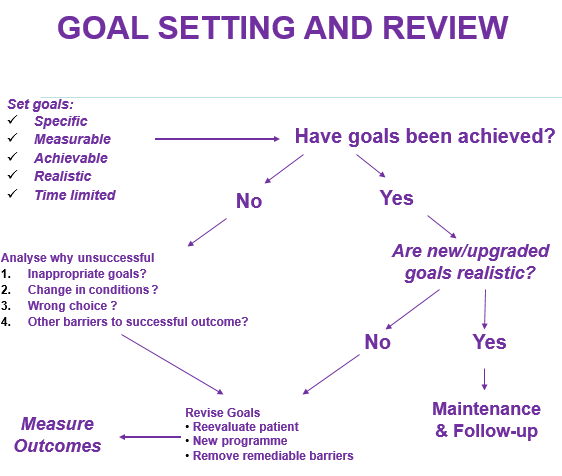
Whether it’s a weight loss programme, quitting smoking or learning how to fly – the general gist of the suggested workflow is that sticking to a plan works far better than random misguided activity.
Goal setting in the sky could be akin to setting incremental minimums, maximums or times to perform a set at tasks.
Try it sometime.
